neck rot Learn more about neck rot
-
Common diseases and insect pests of cherry and their control
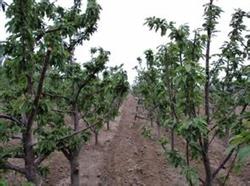
Many diseases and insect pests of cherry are the same as those of other drupe fruit trees, which can be used for reference. The main diseases of cherry are perforation, root neck rot and visceral disease. Root neck rot often occurs on trees in the early fruit stage, causing root neck ulcers. Prevention and control methods: mainly to avoid long-term cultivation of soil in the root neck of the plant, prevention and control of underground damage.
2018-09-11 -
Incidence regularity and control of onion neck rot

First, the symptoms mostly occur in the mature period or storage period of onion bulbs. In addition to onions, it can also infect other onion and garlic vegetables. During the growth period, the disease mainly appeared in the neck of the leaf sheath and bulb, the internal tissue rotted, and there was gray mold when it was wet.
2020-11-08 Onion neck rot disease regularity and prevention and control one -
Prevention and treatment of Actinidia root rot caused by soft rot leaves of root and neck cortex

Prevention and treatment of Actinidia root rot caused by soft rot leaves of root and neck cortex
2018-07-10 -
What symptoms does apple blight rot have? What are the prevention and control methods? What kind of medicine do you use?

Apple blight rot, also known as neck rot and solid rot, is one of the important diseases of apple. High temperature and humidity climate is very easy to cause apple blight rot. What are the symptoms of apple blight? What are the prevention and control methods? What kind of medicine do you use? Apple blight is one of the few apple trees.
2020-11-09 Apple epidemic rot disease have which symptoms control methods use -
Harvesting and storage of Dahlia root tuber
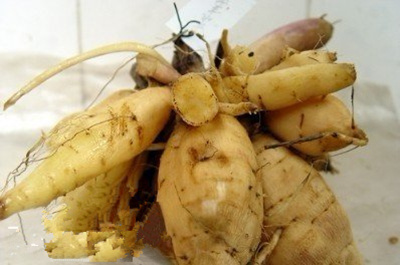
Dahlia is not cold-resistant, mainly because the root tuber can not be frozen, Dahlia root at 0. Dormancy begins at 5 degrees Celsius and frostbite occurs when the temperature is below 0 degrees Celsius, so you cannot overwinter in the open field in North China, and the roots should be harvested before the early frost. Plants and leaves wither and wither after frost. At this time
2018-12-20 -
Control measures of Citrus foot Rot
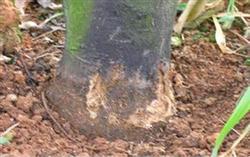
Distribution and harmful symptoms: foot rot, also known as skirt rot, is a root and neck disease, which occurs in all citrus areas in China. It harms the citrus root neck and the main root cortex, and the diseased bark is brown with the smell of lees and often exudes gum. Under the dry condition, the disease part cracked and hardened, and the boundary between it and the healthy part was obvious. At the beginning, only the tree table is endangered.
2018-09-15 -
Control of root rot of Schisandra chinensis

Root rot of Schisandra chinensis, commonly known as rotten ankle disease and choking disease, is one of the main diseases in Schisandra cultivation. At present, the incidence area is more common and the harm is more serious. The disease usually occurs from May to early August. At the beginning of the disease, the epidermis at the junction of the root and the ground (root neck) blackened, further cortical decay, shedding, forming a ring, the leaves wilted, and the whole plant died a few days later. The cause of the disease was related to physiological diseases. The ground changes violently during the day and night in early spring and late autumn, the temperature difference is large, the tissue at the root and neck is tender, the disease resistance is decreased, and the cortex feels frozen.
2019-01-16 -
How to control Sclerotinia root rot of walnut seedlings?
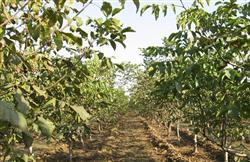
Sclerotial root rot, also known as white silk disease, harms seedlings for one more year, making its main root and lateral root cortex rot, aboveground withered, or even all dead. 1. Symptoms of the disease: at high temperature and high humidity, white silky mycelia were produced on the base of seedling root neck and the surrounding soil and deciduous surface, followed by small sclerotia.
2018-09-14 -
New techniques for preventing and controlling Root Rot of Peach trees

New techniques for preventing and controlling root rot of peach trees 1 the main symptoms of root rot of peach trees are that the cortex and xylem are filled with white to yellowish mycelium, the hyphae fan-shaped and the fresh mycelium has turquoise fluorescence in the dark.
2018-06-07 -
What are the common diseases and insect pests in planting cherries?
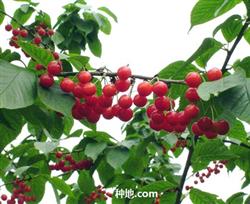
What are the main diseases and insect pests of sweet cherries? How to control the main diseases of sweet cherry are peach bacterial perforation and round spot, which are serious in the rainy months of July, August and September, harming branches, leaves, shoots and fruits. If not controlled in time, the whole tree will lose leaves. For flower bud formation, tree potential development and the second year.
2018-07-23 -
Impatiens root rot

Impatiens occurs in all cultivation areas, which can cause plant death. The symptoms mainly infected the root neck and the following parts of Impatiens balsamina, the primary gray-brown disease spot, and then expanded rapidly, making the root slightly swollen and turned into black-brown rot; the root neck tissue lost water and wrinkled after decay. The aboveground part showed sudden wilting of the diseased plant, and gradually intensified, like a temporary lack of water, but irreversible after watering. The pathogen of the disease is fungus, Rhizopus nigricans. The pathogen overwintered in the soil with the residue of the diseased plant. The soil is too wet, high temperature,
2019-01-16 -
Carnation Fusarium wilt

1. The susceptible part of the symptom becomes yellowish brown or brown dry rot, which spreads upward quickly, the stem shrinks, and the xylem shows yellowish brown or purple brown rot. The leaves of the aboveground parts of the diseased plants lost their luster and became soft, and the leaves near the root neck first withered and sagged. With the rapid development of the disease, the plant withered quickly; if the bacteria invaded from one side of the plant, it first showed half of the wilt. When the environment is wet, color filaments can be seen at the rot of the root neck, which is the fruiting body of the pathogen. two。 Pathogenic half-known bacteria subphyllosporum Fusariumdianth
2019-01-16 -
Prevention and treatment of common diseases of soft-shelled turtle

Soft-shelled turtle diseases can be divided into three categories: infectious soft-shelled turtle diseases caused by bacteria, molds or viruses, parasitic diseases caused by parasites and diseases caused by other causes. the more harmful and common diseases are red floor disease, white floor disease and red neck disease. Skin rot disease, perforation disease, white spot disease, bell disease and so on. The following is an introduction to the pathogens, causes and treatment of various diseases. 1. The pathogen of red neck disease. The pathogen of red neck disease is Aeromonas hydrophila, which is gram-negative. Soft-shelled turtles with bacteria and polluted pond water are the main sources of infection.
2019-01-16 -
Root rot of Lycium barbarum and its control

The occurrence of Chinese wolfberry root rot is common and the harm is serious. 3% of the plants die due to the disease every year, which causes great losses to the production of Chinese wolfberry. According to the research of Lu Zhankui and others of Ningxia Academy of Agriculture and Forestry, there are two types of root rot symptoms: (1) root rot type. The root or root neck decayed and peeled off in varying degrees, and the vascular bundles of the stem turned brown, and the white or pink mildew layer appeared when the disease was wet. It can be divided into lobular type and yellowing type. ① leaflet type: late leaf spreading in spring, small leaves, dwarf branches, buds and
2019-01-15 -
How to identify peanut root rot?
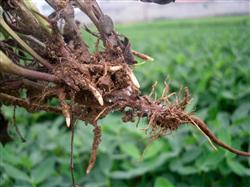
The incidence of peanut root rot is the most serious in the flowering and fruiting period. It mainly harms the root of peanut. After peanut infection, there were yellowish-brown infiltrating disease spots in the root neck, and then the disease gradually became dark brown. The main root of the diseased plant is wet-rotted, the root cortex turns brown and rotten, it is easy to peel off, there is no lateral root, or the lateral root is few and short, and the main root is like a rat tail.
2018-09-12 -
When will the Dutch apricot mature? What are the key points of planting techniques?

Dutch fragrant apricot, also known as fragrant honey apricot, the origin is unknown, it is said that the Netherlands said Japan, there is no way to study. But its excellent quality has won the favor of consumers and fruit merchants. Dutch fragrant apricot tastes super cool and delicious, with a strong pineapple flavor. The white ripe period will be fine.
2020-11-09 Holland fragrant apricot when mature planting technology key points have -
Beware of four diseases in raising money turtles

In the process of raising money turtles, due to the deterioration of pond water, high stocking density, mixed culture of large and small turtles, improper bait, freezing injury and summer injury and other reasons, the turtles often get sick or die. Now the money tortoise is easy to occur four diseases and prevention and treatment methods are introduced as follows: first, the symptoms of red neck disease: the disease mostly occurs in the plum rain season. The diseased tortoise has red spots on the abdomen, swollen throat and neck, elongated neck that cannot be retracted, loss of appetite and slow response. When the condition is serious, nosebleed, intestinal inflammation and erosion, redness and swelling of the whole body, no
2019-01-16 -
Identification of common confounding symptoms in rice

1. Several kinds of Ralstonia solanacearum 1. Sclerotinia sclerotiorum. It is more common in the late stage of late rice, which often occurs in clumps in the field, and there are several plants in a hole. The tissue at the base of rice is soft rotten and has dark brown spots. Peeling off the basal leaf sheath and stem, we can see that there are many black sclerotia smaller than amaranth seeds. 2. Bacterial base rot and wilt. Sporadic occurrence in the field, generally 1 in 1 point, 3 plants fell ill, the base of the diseased plant showed rat gray rot, the root system was rare and decayed, peeled off the basal stem, full of smelly water, sterile sclerotia. 3. Physiologically withered. The stem of rice plant shrinks and the base of rice stem is pinched by hand.
2019-01-16 -
The propagation method of Dahlia tuber root?
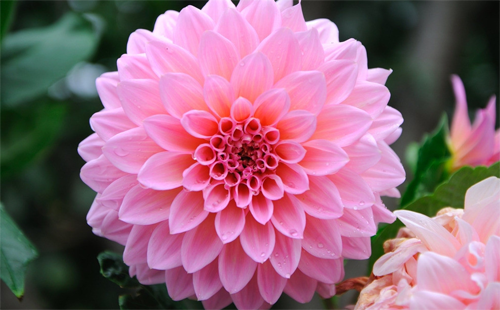
According to the propagation method of Dahlia tuber root, Dahlia is tall, changeable, colorful and elegant, which is not only an important bulb flower for flower bed, flower border, courtyard and potted plants, but also a good material for fresh cut flowers. Double dahlia with high ornamental value is extremely difficult to obtain seeds.
2019-03-06 -
Prevention and Control of Frost injury of Apple trees

Freezing injury has always been a common cause of damage to fruit trees, especially apple trees, and apple trees are perennials. Once freezing injury occurs, the impact is lasting. A series of rot diseases caused by freezing injury are also a headache for fruit growers. Below
2020-11-08 Apple trees frost injury prevention and control always yes fruit trees
